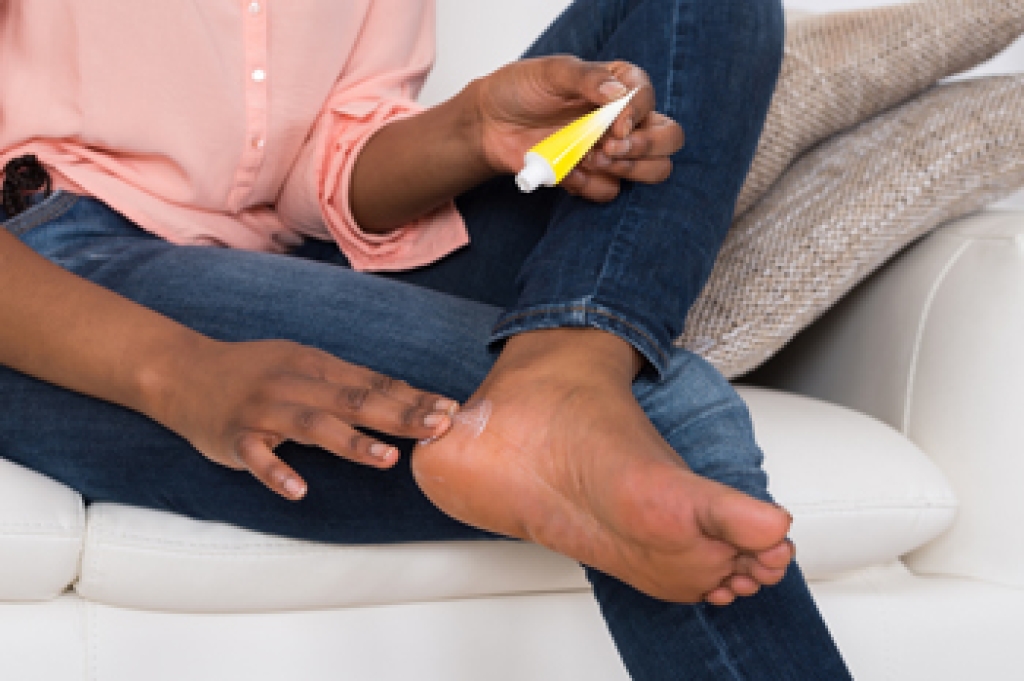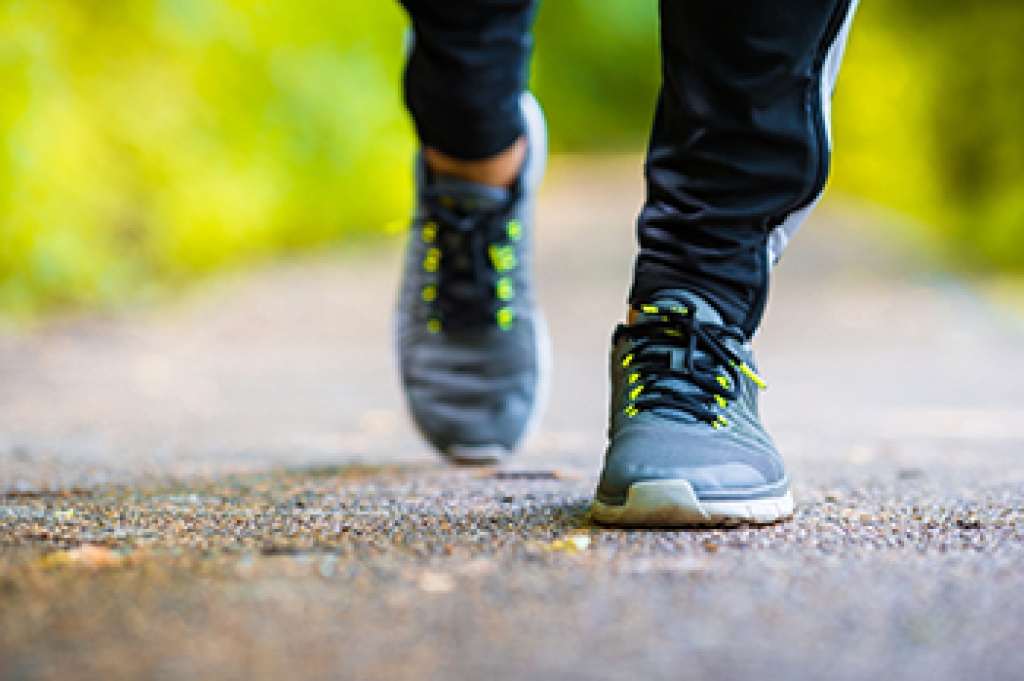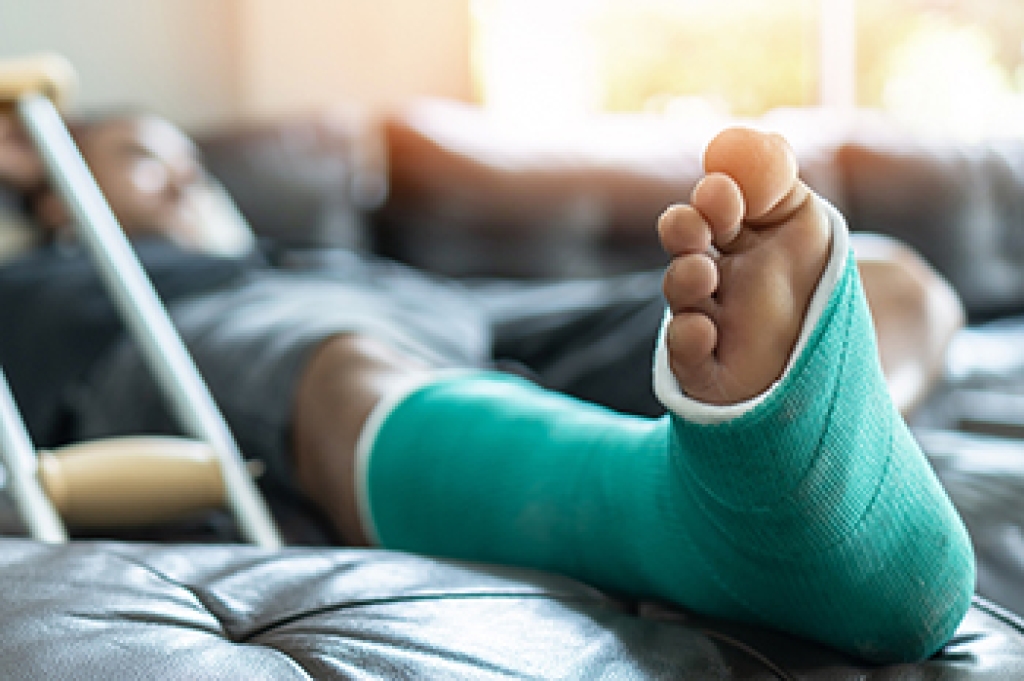Connect With Us
Blog
Blog
How to Care For Your Feet
 Your feet carry you throughout your life, and just like any other part of your body, they need daily care to keep them healthy. Good foot care starts with good footwear. Look for shoes and socks that are comfortable, supportive, fit properly, and are made from breathable materials. Avoid wearing shoes that are tight, narrow, or have excessively high heels. Give your feet an easy workout by going on a walk and doing some simple foot stretches. Wash your feet daily using lukewarm water and mild soap and be sure to dry the feet thoroughly. Moisturize your feet, particularly the soles and heels, to prevent dry, cracked skin. To learn more about good foot care practices, please consult with a chiropodist.
Your feet carry you throughout your life, and just like any other part of your body, they need daily care to keep them healthy. Good foot care starts with good footwear. Look for shoes and socks that are comfortable, supportive, fit properly, and are made from breathable materials. Avoid wearing shoes that are tight, narrow, or have excessively high heels. Give your feet an easy workout by going on a walk and doing some simple foot stretches. Wash your feet daily using lukewarm water and mild soap and be sure to dry the feet thoroughly. Moisturize your feet, particularly the soles and heels, to prevent dry, cracked skin. To learn more about good foot care practices, please consult with a chiropodist.
Caring for your feet is not just something done at the chiropodist’s office. Good foot care starts at home. If you would like to learn more about daily foot care practices, please consult with one of our chiropodists from West Toronto Foot & Ankle Clinic Inc. . Our chiropodist can help you maintain the health of your lower limbs and your mobility.
There are many things that you can do at home to help care for your feet, including:
- Wearing shoes and socks that fit properly
- Washing the feet daily with soap and water
- Drying the feet thoroughly
- Applying moisturizer to the soles and heels of the feet
- Taking a walk and exercising the feet regularly
- Doing foot stretches and strengthening exercises
A chiropodist can help figure out a manageable foot care routine for you to keep your feet healthy. If you have any questions please feel free to contact our office located in Toronto, ON .
Why Does My Heel Hurt?
 Heel pain is frequently seen by a chiropodist. There are several potential causes of heel pain. The most common cause is plantar fasciitis, an inflammation of the ligament that runs along the bottom of the foot and connects the heel bone to the toes. When this ligament is injured, usually due to overuse, it can cause heel and arch pain. Pain at the back of the heel may be caused by Achilles tendonitis. Other symptoms of this condition include ankle and calf swelling, tenderness, and stiffness. Other potential causes of heel pain include bone spurs, stress fractures, bursitis, Sever’s disease, and tarsal tunnel syndrome. If you are experiencing heel pain, please seek the care of a chiropodist.
Heel pain is frequently seen by a chiropodist. There are several potential causes of heel pain. The most common cause is plantar fasciitis, an inflammation of the ligament that runs along the bottom of the foot and connects the heel bone to the toes. When this ligament is injured, usually due to overuse, it can cause heel and arch pain. Pain at the back of the heel may be caused by Achilles tendonitis. Other symptoms of this condition include ankle and calf swelling, tenderness, and stiffness. Other potential causes of heel pain include bone spurs, stress fractures, bursitis, Sever’s disease, and tarsal tunnel syndrome. If you are experiencing heel pain, please seek the care of a chiropodist.
Heel pain is a common problem that can be caused by a variety of injuries, medical conditions, and other factors. If you suffer from heel pain, please consult with one of our chiropodists from West Toronto Foot & Ankle Clinic Inc. . Our chiropodist can help you maintain the health of your lower limbs and your mobility.
When it comes to heel pain, the exact location and type of pain are important to note. Some of the conditions that may cause heel pain include:
- Plantar fasciitis - An inflammation of the ligament that runs along the bottom of the foot; it causes a stabbing pain under the heel that is at its worst when taking your first few steps after a long rest and while standing on your tiptoes or climbing stairs
- Achilles tendonitis - An inflammation of the tendon in the back of the calf; it causes pain in the back of the heel that is at its worst after resting, as well as ankle and calf stiffness, swelling, and tenderness
- Bone spurs - Bony lumps on the back of the heel bones that cause sharp pain upon first standing up; the pain becomes dull and achy over time
- Heel fractures - A break or crack in the heel bone that causes pain, swelling, and difficulty walking
- Retrocalcaneal bursitis - Swelling of the small, fluid-filled sac at the back of the heel bone; it causes pain, swelling, redness, and warmth in the back of the heel
- Tarsal tunnel syndrome - Compression of the posterior tibial nerve which causes a pins and needles sensation in the heel, foot, and calf
Your chiropodist will be able to diagnose the underlying cause of your pain and prescribe the right treatments for you. If you have any questions please feel free to contact our office located in Toronto, ON .
Running Shoes vs. Walking Shoes
 Running and walking are both excellent forms of exercise. Both are usually done while wearing sneakers, but did you know that there are different types of sneakers? Running shoes are specifically designed for running. They have more cushioning, tend to be the most flexible at the arch or midfoot and have a higher heel height. Walking shoes are usually less cushioned, less flexible, and have a lower heel. Walking shoes are also usually harder to find in stores. While you can certainly walk in running shoes, doing the opposite — running in walking shoes — is not a great idea, as walking shoes lack the cushioning and flexibility needed to support the feet as they hit the pavement. For more information about the differences between walking and running shoes, and how to find the best shoes for you, please consult with a chiropodist.
Running and walking are both excellent forms of exercise. Both are usually done while wearing sneakers, but did you know that there are different types of sneakers? Running shoes are specifically designed for running. They have more cushioning, tend to be the most flexible at the arch or midfoot and have a higher heel height. Walking shoes are usually less cushioned, less flexible, and have a lower heel. Walking shoes are also usually harder to find in stores. While you can certainly walk in running shoes, doing the opposite — running in walking shoes — is not a great idea, as walking shoes lack the cushioning and flexibility needed to support the feet as they hit the pavement. For more information about the differences between walking and running shoes, and how to find the best shoes for you, please consult with a chiropodist.
Finding the right shoes can sometimes be a major hassle, especially if you intend to work out in them. There are shoes on the market designed specifically for running and walking, but it can be difficult to differentiate between the two and find the right shoes for you. If you’re having trouble finding the right shoes, please consult with one of our chiropodists from West Toronto Foot & Ankle Clinic Inc. . Our chiropodist can help you maintain the health of your lower limbs and your mobility.
What are the differences between running and walking shoes?
These two types of shoes vary along several parameters.
- Cushioning: Runners need more cushioning in the heel and forefoot areas of the shoe, while walkers can get away with less cushioning.
- Heel height: Runners need a higher heel to provide them with stability, but the ideal height of the heel for runners varies depending on their running gait. Walkers generally don’t need a built-up heel.
- Heel flare: Flared heels can help provide extra stability for runners with certain gaits, while walkers may benefit from a flared heel to control the motion of their foot.
- Flexibility: Both runners and walkers need shoes that are flexible.
For more information about the differences between walking and running shoes, and to figure out which shoes may be right for you, please consult with a chiropodist. If you have any questions please feel free to contact our office located in Toronto, ON .
Common Foot and Ankle Injuries Treated by Chiropodists
 There are many foot and ankle injuries that a chiropodist can treat. These include injuries of the nerves, muscles, tendons, ligaments, bones, or joints in the feet and ankles. Plantar fasciitis, an inflammation of the ligament that runs along the bottom of the foot, is a common cause of heel pain. This condition can also lead to or be accompanied by heel spurs, calcium buildups on the ends of the heel bone that can irritate the plantar fascia ligament. Stress fractures, which are tiny breaks in the bones of the feet, are also common. Further up in the ankle and calf region, common injuries include Achilles tendonitis and ankle sprains. If you are experiencing any foot or ankle pain, please consult with a chiropodist.
There are many foot and ankle injuries that a chiropodist can treat. These include injuries of the nerves, muscles, tendons, ligaments, bones, or joints in the feet and ankles. Plantar fasciitis, an inflammation of the ligament that runs along the bottom of the foot, is a common cause of heel pain. This condition can also lead to or be accompanied by heel spurs, calcium buildups on the ends of the heel bone that can irritate the plantar fascia ligament. Stress fractures, which are tiny breaks in the bones of the feet, are also common. Further up in the ankle and calf region, common injuries include Achilles tendonitis and ankle sprains. If you are experiencing any foot or ankle pain, please consult with a chiropodist.
Trauma to the foot or ankle is one of the most common reasons that people visit a chiropodist. If you have a foot or ankle injury, please consult with one of our chiropodists from West Toronto Foot & Ankle Clinic Inc. . Our chiropodist can help you maintain the health of your lower limbs and your mobility.
Your feet contain 26 bones, 33 joints, and more than 100 tendons, muscles, and ligaments. Your ankles are large joints made up of three bones and various ligaments. All of these components work together to allow your lower limbs to move you throughout your life. Injuries to the feet and ankles can affect any one of these structures and can occur at any time. Some of the most common foot and ankle injuries include:
- Morton’s neuroma - Swelling of a nerve that runs between two toes, causes pain in the ball of the foot
- Stress fractures - Tiny cracks in one or more bones that can cause severe pain
- Plantar fasciitis - An inflammation of the ligament that runs along the bottom of the foot, causes stabbing heel pain
- Sesamoiditis - Causes pain in the sesamoid bones, located beneath the ball of the foot
- Achilles tendonitis - Inflammation of the tendon that connects the calf muscles to the heel bone, causes pain in the back of the calf
- Ankle sprain - Overstretching or tearing of one or more ligaments in the ankle, which causes ankle pain and can make it difficult to walk
Injuries to the feet and ankles often occur during athletic activities, such as running or playing a sport, or while wearing ill-fitting shoes. Other potential causes of injury include impacts from accidents, a sudden twisting while walking, or underlying biomechanical problems or medical conditions that affect the feet. Treatment for most of these injuries typically involves resting the feet and modifying activities and footwear to take pressure off of the affected foot.
All of these conditions, and many more, can be diagnosed and treated by a chiropodist. If you have any questions please feel free to contact our office located in Toronto, ON .
Blog Archives
- 2026
- 2025
- 2024
- 2023
- 2022
- 2021

